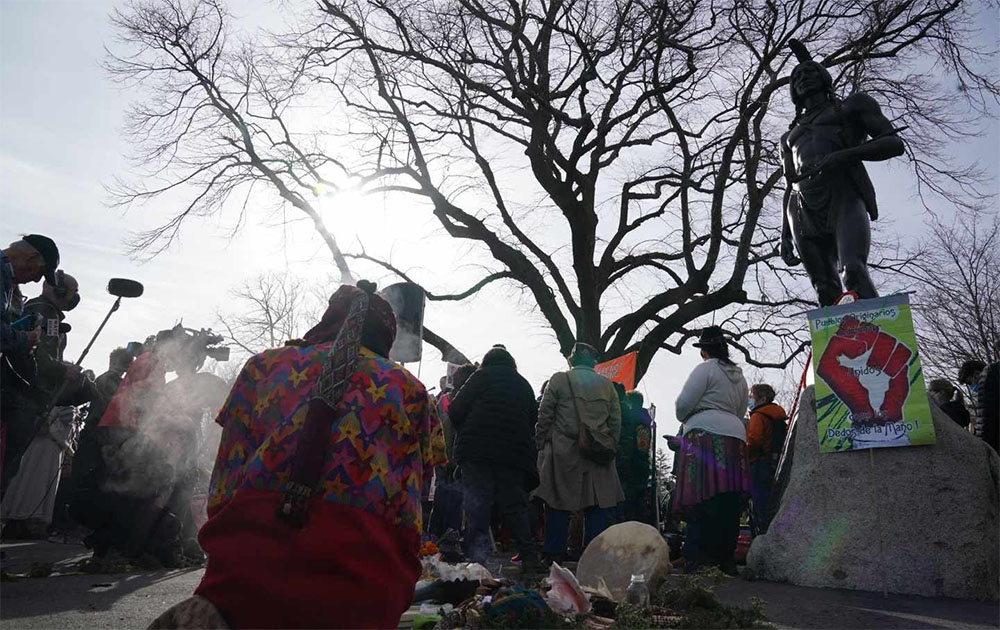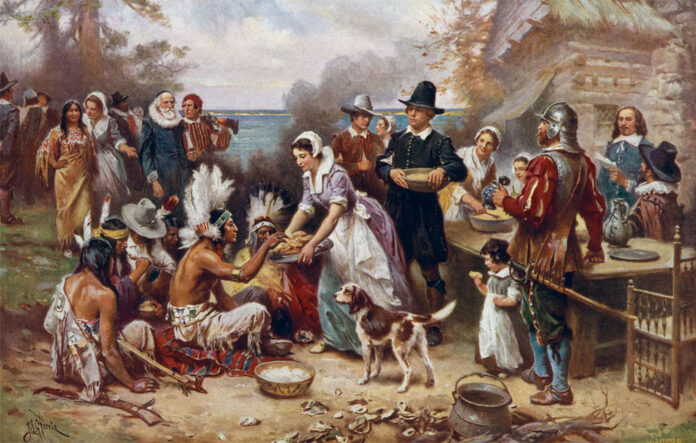We all, regardless of our cultural and religion tradition, living in the United States, Thanksgiving Day has become part of the great American family holiday.

It is an empty moment of everyday life when most activities stop: most businesses close wjti the exception of those food outlets like supermarkets, that open half day.
Most people get ready to be with loved ones and those who are not vegetarians, will probably eat the famous turkey dinner. Airline travel at the airports get saturated for those traveling long distances to meet with families.
However, many recently-arrived immigrants sometime they think it is a religious holiday, but it is not.
Thanksgiving is a national holiday celebrated on various dates in the United States, Canada, Grenada, Saint Lucia, Liberia, and unofficially in countries like Brazil and the Philippines. It is also observed in the Dutch town of Leiden and the Australian territory of Norfolk Island.
Thanksgiving is commonly known as a way to commemorate the colonial Pilgrims’ harvest meal that they shared with Wampanoag Indians (who “were key to the survival of the colonists during the first year they arrived in 1620”) in 1621 (although there is controversy about whether or not the meal was originally intended to be shared).
Besides the original meal shared in 1621, Pilgrims held their second Thanksgiving in 1623 to celebrate the end of a long drought. Additional feasts of giving thanks for various reasons were also given in subsequent years. However, technically, the first official, designated Thanksgiving was celebrated much later—in 1789. According to the National Archives, Congress asked President George Washington for a national day of thanksgiving. Thursday, November 26, 1789 was, therefore, declared the “Day of Publick Thanksgivin.”
Thanksgiving is all about reflecting on blessings and acknowledging gratitude. After all, in President George Washington’s 1789 Thanksgiving Proclamation, he stated its purpose: “Whereas it is the duty of all Nations to acknowledge the providence of Almighty God, to obey his will, to be grateful for his benefits, and humbly to implore his protection and favor—and whereas both Houses of Congress have by their joint Committee requested me ‘to recommend to the People of the United States a day of public thanksgiving and prayer to be observed by acknowledging with grateful hearts the many signal favors of Almighty God, especially by affording them an opportunity peaceably to establish a form of government for their safety and happiness.’”
Even after that first established Thanksgiving in 1789, the dates and months of subsequent Thanksgivings varied. It took almost another century for one clear date to be established. Sarah Josepha Hale wrote a letter to President Abraham Lincoln on September 28, 1863, requesting the last Thursday in November to be a day of Thanksgiving announced to the whole country. In response, President Lincoln declared on October 3 that this would, in fact, be the case. He explained that “in the midst of a civil war of unequaled magnitude and severity, the American people should take some time for gratitude.”
These yearly celebrations continued on in this tradition until 1939. That August, President Franklin Roosevelt (FDR) announced that Thanksgiving was going to be celebrated a week earlier, saying that “merchants would benefit from another excuse for shopping between Labor Day and Christmas.” This caused some controversy throughout the next few years, splitting almost half the nation between the two dates. FDR ultimately reversed his decision in December of 1941, signing the resolution from Congress that declared Thanksgiving would go back to being celebrated on the fourth Thursday of November from then on.
These yearly celebrations continued on in this tradition until 1939. That August, President Franklin Roosevelt (FDR) announced that Thanksgiving was going to be celebrated a week earlier, saying that “merchants would benefit from another excuse for shopping between Labor Day and Christmas.” This caused some controversy throughout the next few years, splitting almost half the nation between the two dates. FDR ultimately reversed his decision in December of 1941, signing the resolution from Congress that declared Thanksgiving would go back to being celebrated on the fourth Thursday of November from then on.
However, there an obscure version of Thanksgiving
According to a member of the Oglala Lakota Nation, born on the Pine Ridge Indian Reservation in South Dakota, his early memories of Thanksgiving are akin to those of most Americans—meat-and-potatoes dishes inspired by Eurocentric 1960s-era cookbooks.

(Bryan R. Smith / AFP via Getty Images)
For many Americans, the image of Thanksgiving is one of supposed unity: the gathering of “Pilgrims and Indians” in a harmonious feast. But this version obscures the harsh truth, one steeped in colonialism, violence, and misrepresentation. By exploring the Indigenous perspective on Thanksgiving, we can not only discern some of the nuances of decolonization but gain a deeper understanding of American history.
The sanitized version of Thanksgiving neglects to mention the violence, land theft, and subsequent decimation of Indigenous populations. Needless to say, this causes tremendous distress to those of us who are still reeling from the trauma of these events to our communities.
For now, El Reportero staff wish you all a Happy Thanksgiving Day full of love and peace in harmony with your loved ones.



